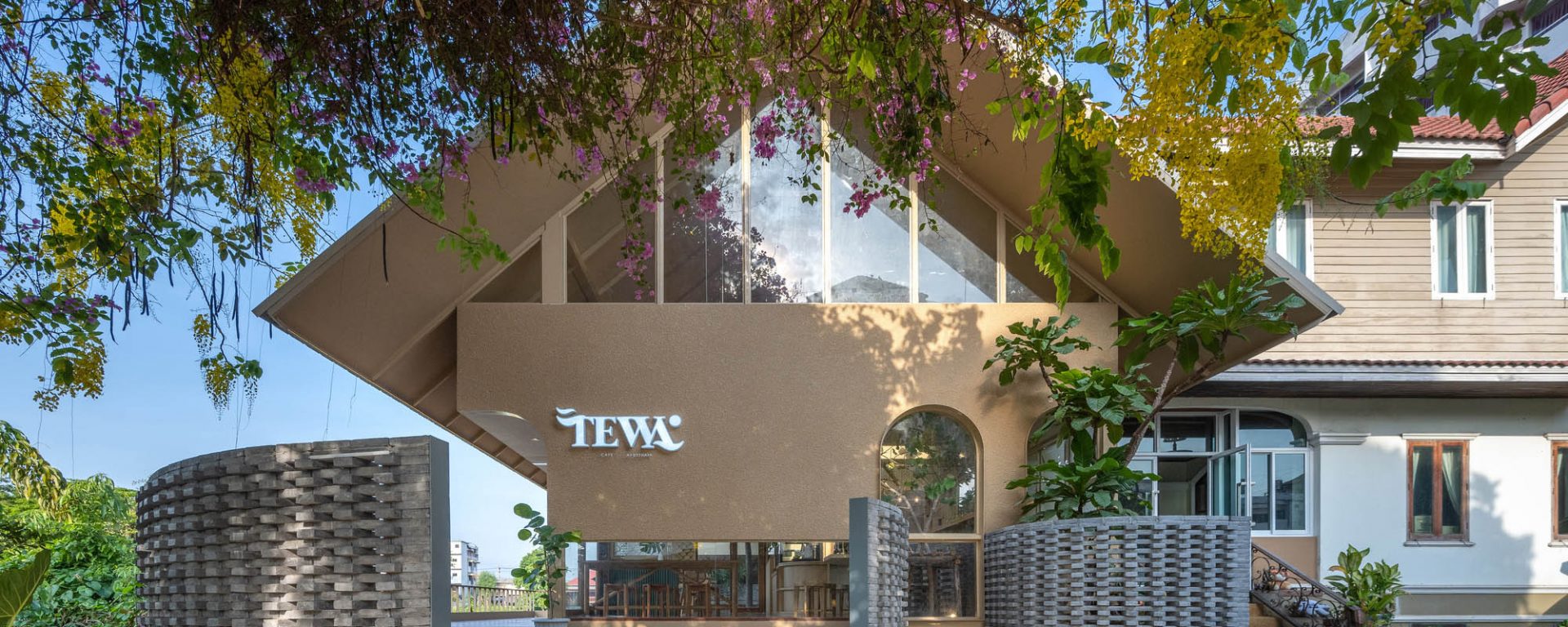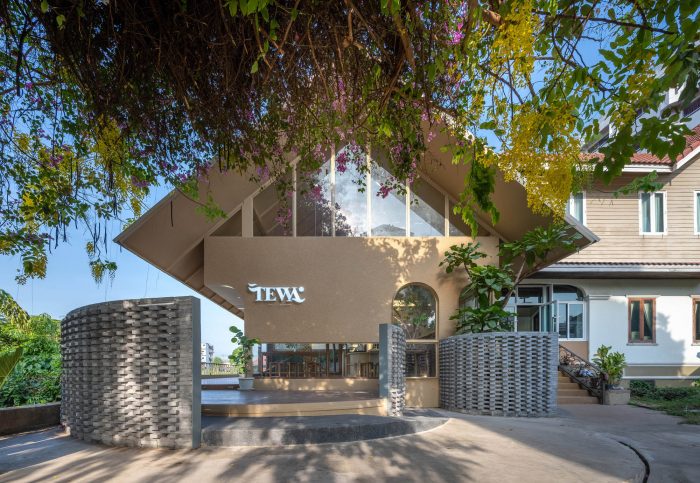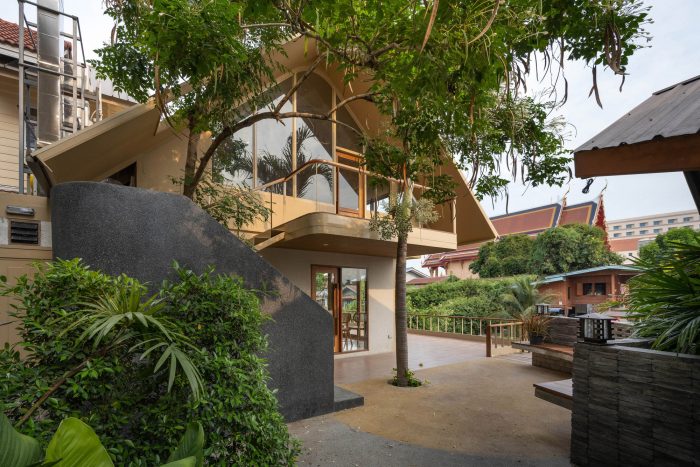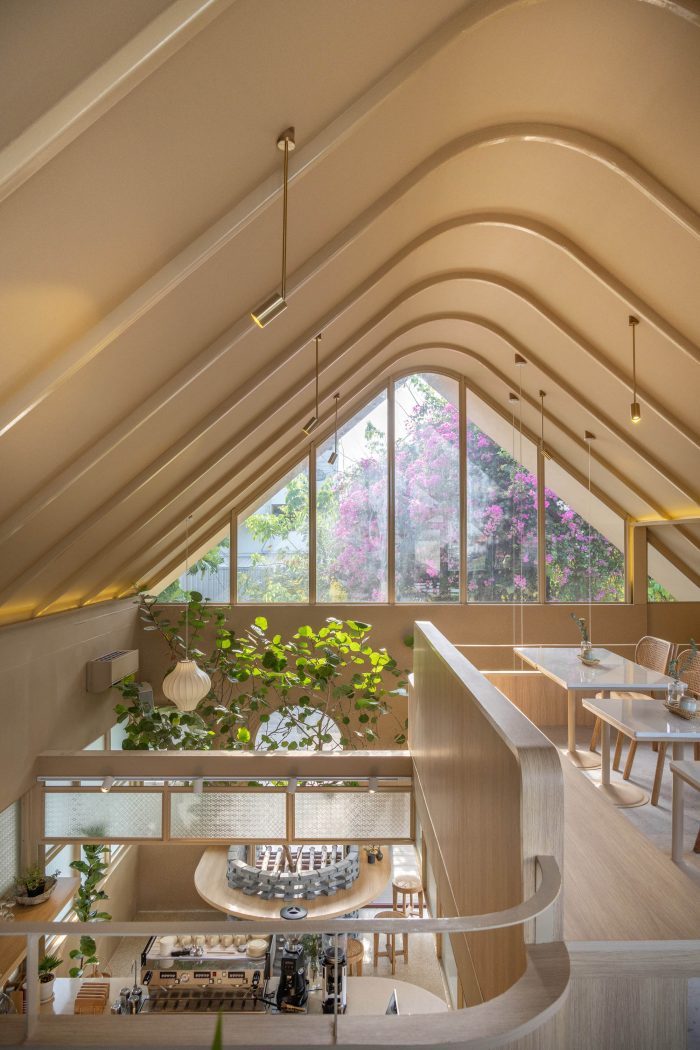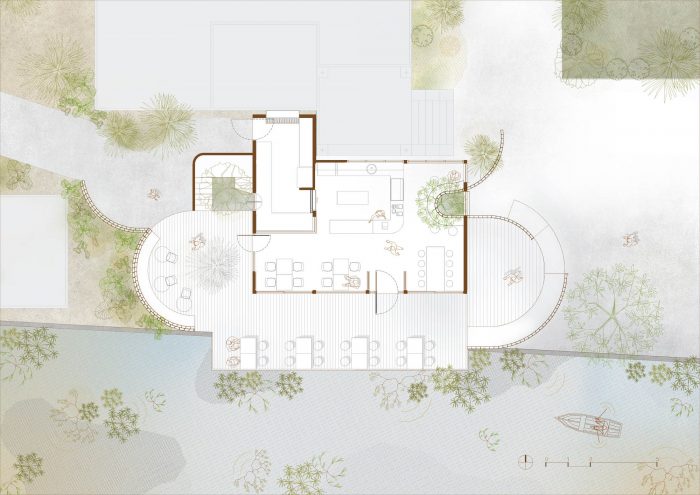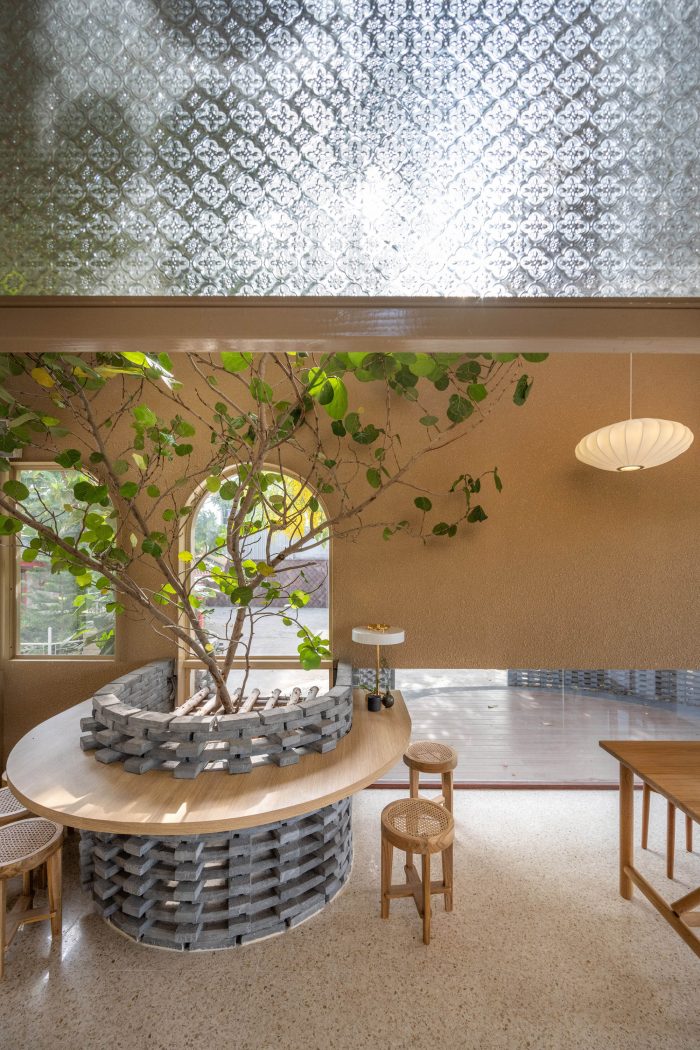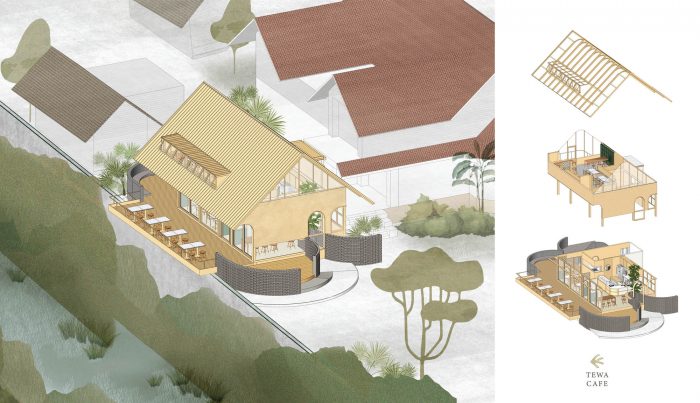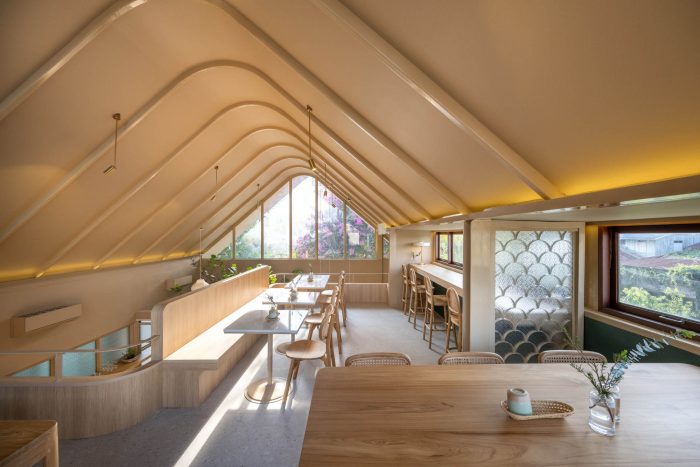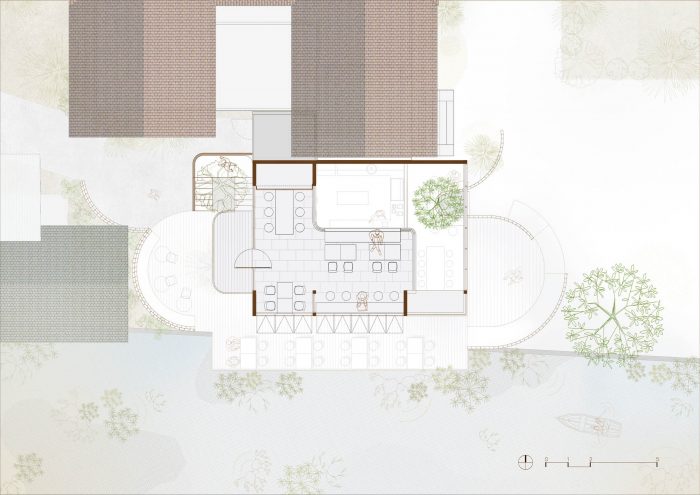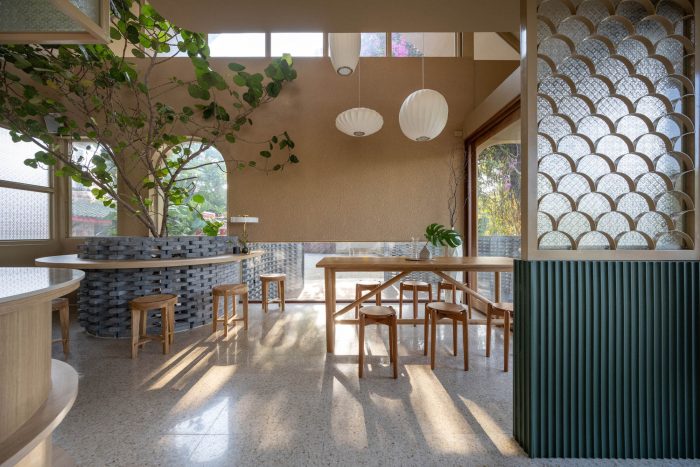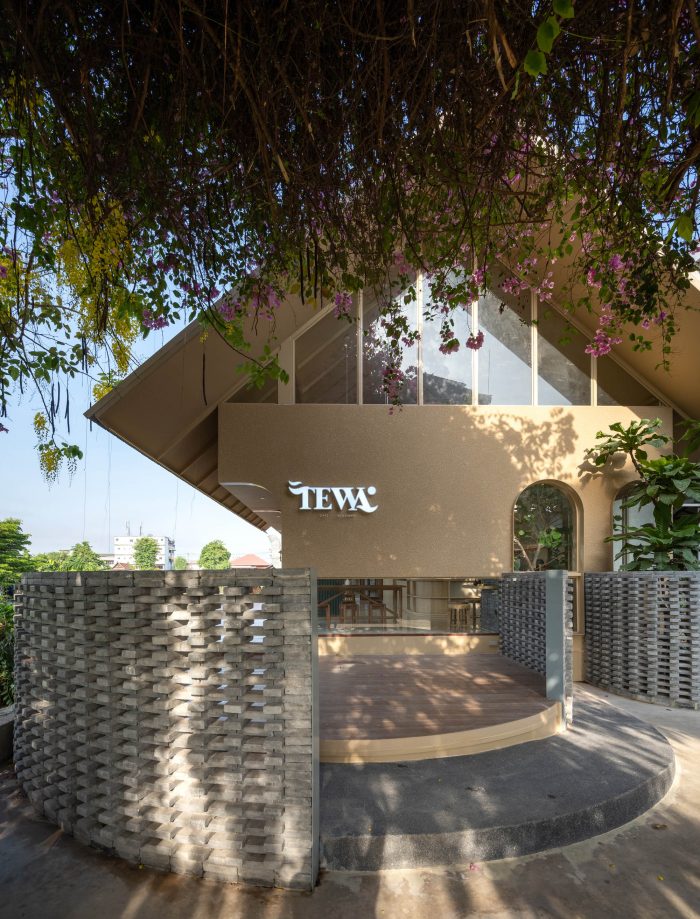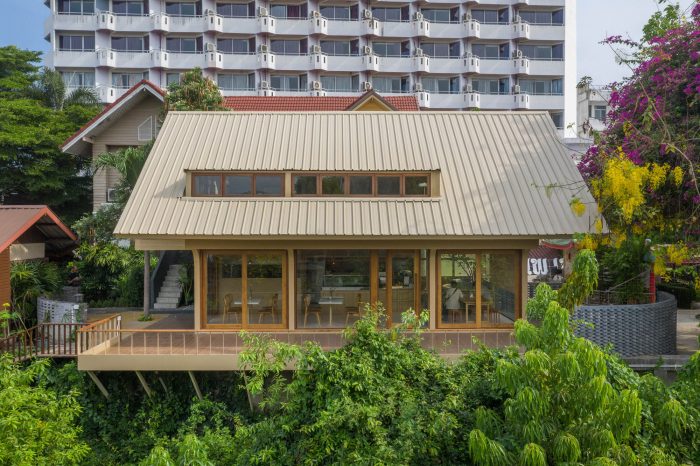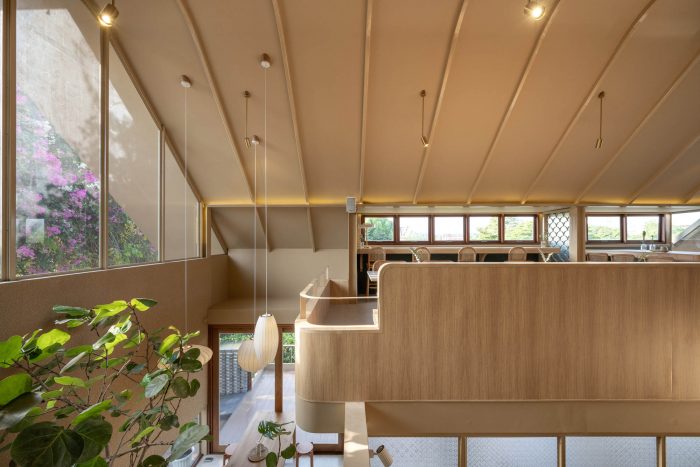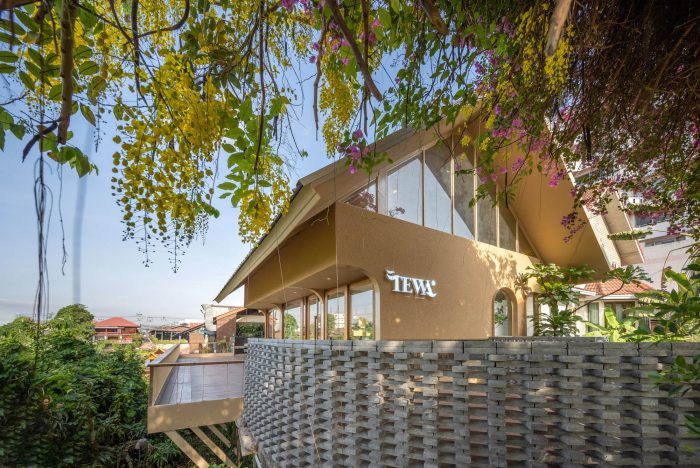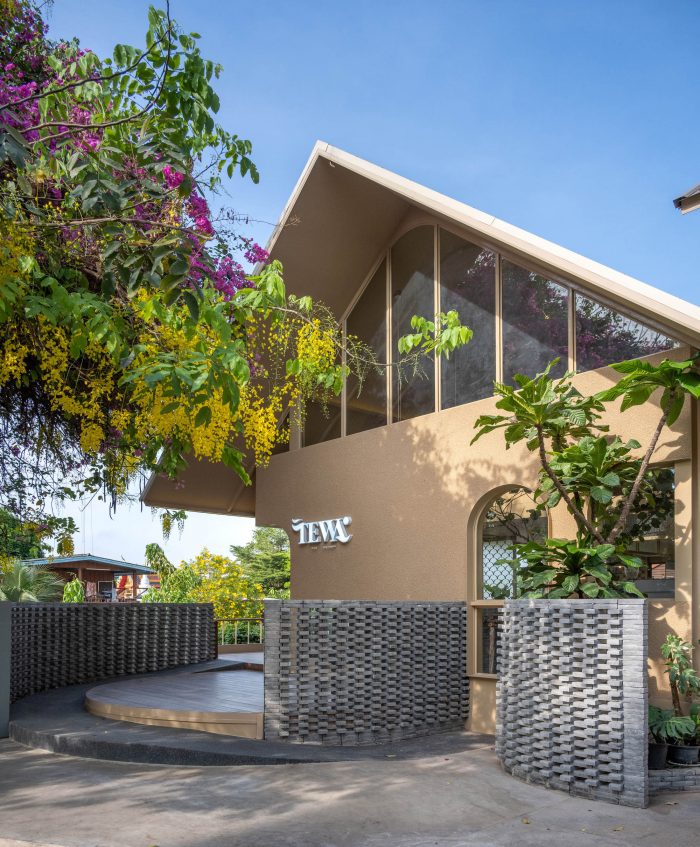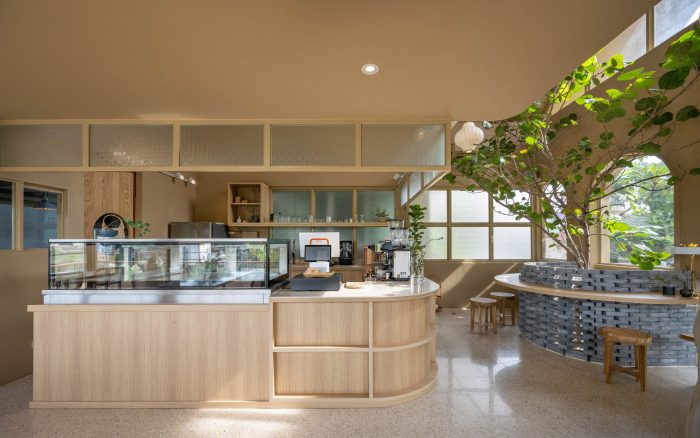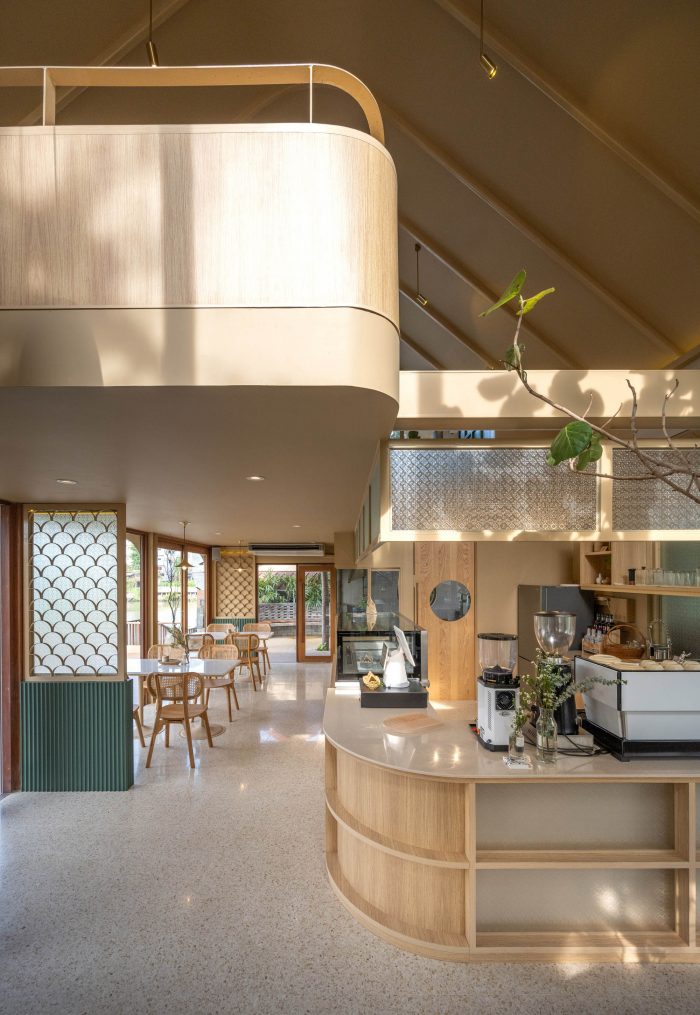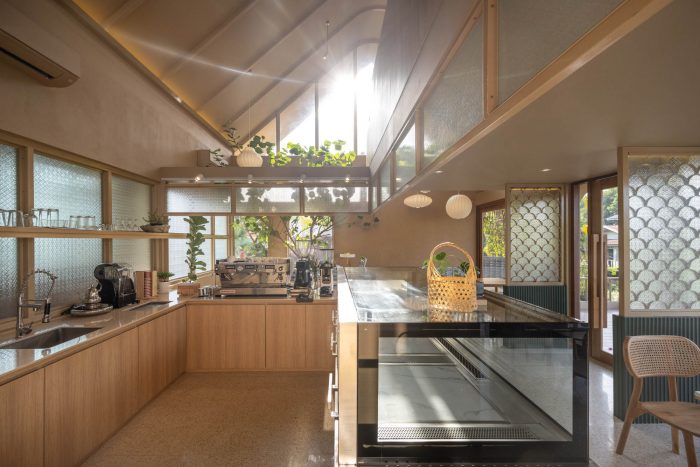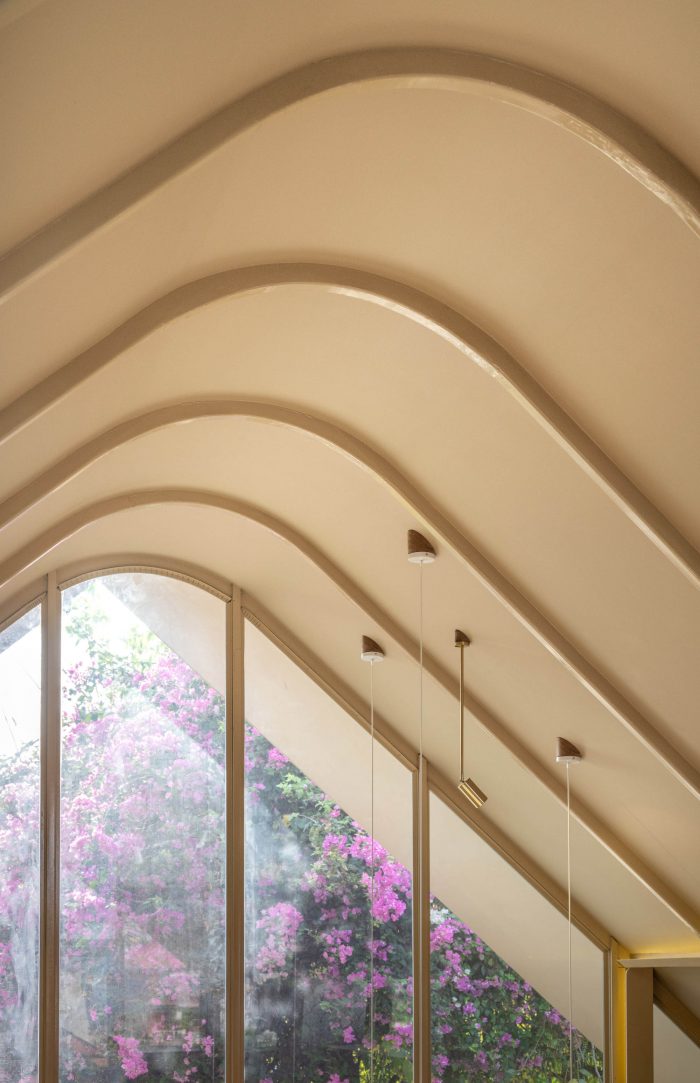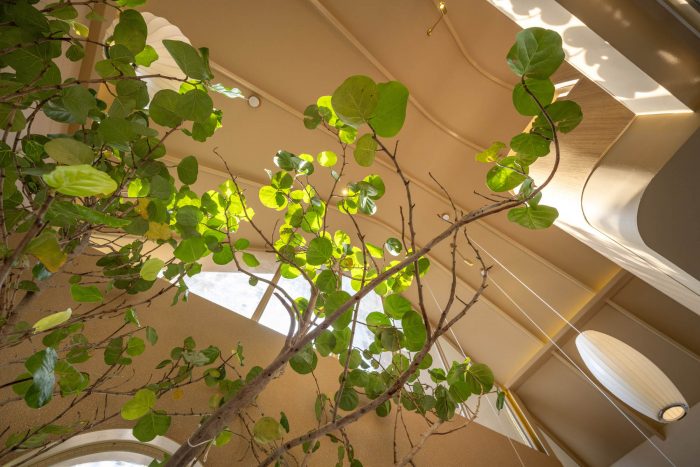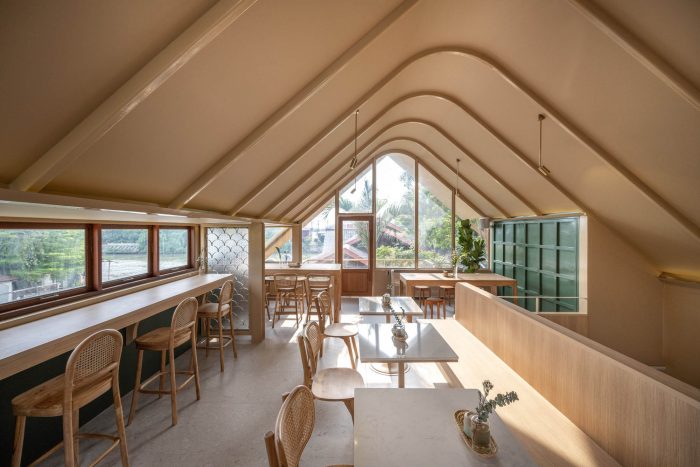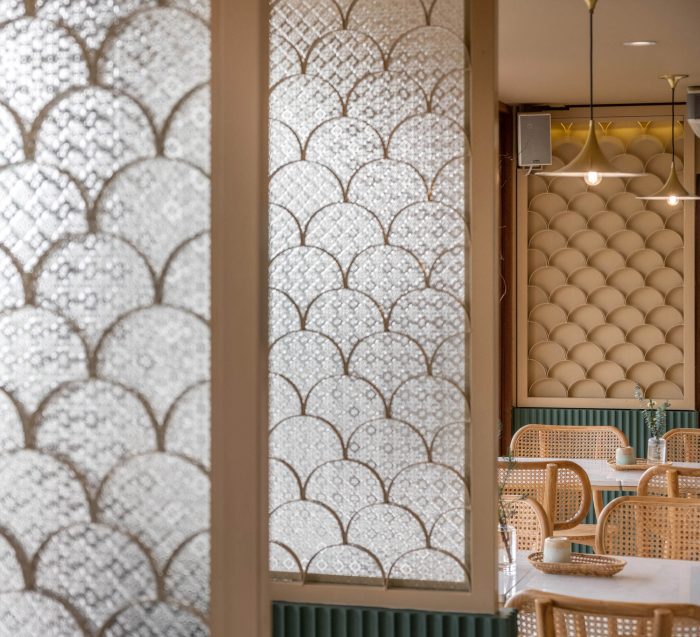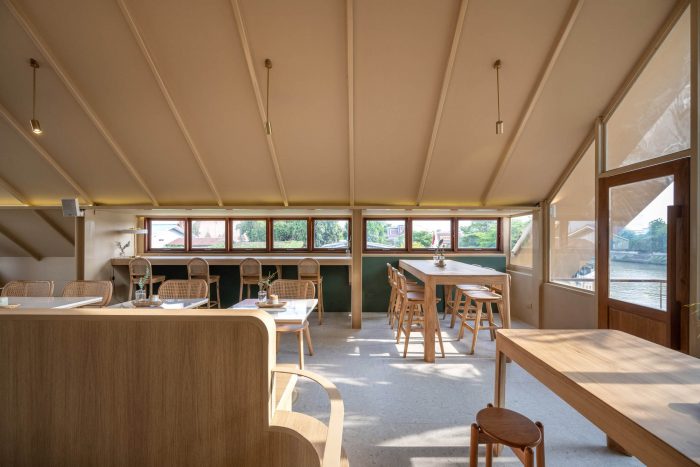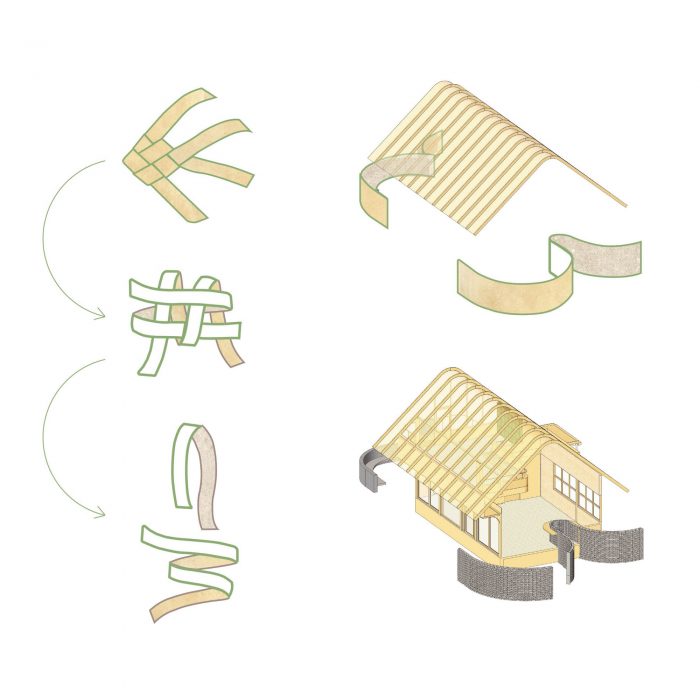TEWA是传统餐厅 “Pae Thewaraj “的各种甜食、主菜和饮料的起点,这家位于帕萨河畔的泰国餐厅已经成立了40多年。如今,孙子们已经开始管理,这是在食品领域增加维度的开始,这也是为许多类型的顾客服务。作为新一代和烹饪专业的毕业生,我们想增加一个菜单,以适应这个需要多种选择的时代,结果是Tewa咖啡馆提供饮料 ,咖啡和意大利食品,它与Thewarat餐厅设置在同一区域的一部分。
TEWA is the starting point for a wide variety of sweet, main dish and beverages from traditional restaurant ‘Pae Thewaraj’, a Thai restaurant on the Pasak River that has been established for more than 40 years. Nowadays, the grandchildren have started to manage and this is the beginning of adding dimension in the field of food this to serve many types of customers as well. As a new generation and a culinary graduate, we wanted to add a menu to suit the era that needed a wide variety of options, resulting in Tewa Café serving drinks , coffee and italian food which is set up as part of the same area as the Thewarat restaurant.
凭借在帕萨河和考莫运河之间交汇的一角的特长,位于水面两岸的Phae Thewarat和Tewa Café的区域都能看到帕萨河的小运河和与大河相连的滨水生活。
With the specialty of the corner of the river that converges between the Pa Sak River and Khao Mao Canal, the area of both Phae Thewarat and Tewa Café, located on opposite banks of the water, offers views of the Pasak River with its small canals and waterfront lifestyle that is well connected to the great river.
设计师想在这两家在食物和风格上有差异的商店之间找到一种联系,使之统一起来。因此选择了使用棕榈叶鲤鱼的概念,这是一个象征着他们与水的联系,因为我们经常看到人们提出来解释这个容易理解的故事,由TEWA的概念讲述一个反向的视角。把棕榈叶展开 ,我们可以看到两片棕榈叶相互卷曲的线条。
The designer wanted to find a connection between the two stores, which had differences in food and style to be united. Therefore chose to use the concept of palm leaf carp, which is a symbol of their bond with the water as we often see people put forward to interpret this easy-to-understand story told by TEWA’s concept of a reverse perspective. Bring the palm leaves to spread out , we can see the lines of the two palm leaves that curl around each other.
建筑的正面使用了从鲤鱼编织中得到的线条灵感,选择使用灰色的砖块材料来排成欢迎线,并定义了进入商店区域的行走线条。这条砖线盘绕并连接着外部空间进入建筑。流入建筑的部分将绿色空间也带入室内。包括后面的灰色砖线,它的作用是将特瓦咖啡馆区域与帕特瓦拉吉餐厅的原始背景也连接起来。
The front of the building uses lines inspired by carp weaving by choosing to use gray brick material to line up the welcome line and to define the lines of the walk into the area of the shop. This brick line coils and connects the outer space into the building. The part that flows into the building brings green space into the interior as well. Including the gray brick line at the back that serves to connect the Tewa Café area to the original context of the Patewaraj restaurant as well.
在楼梯区域,前门的设计是为了隐藏轮椅坡道,以方便老人和残疾人使用。在一楼区域内作为商店的核心,结合了食品和饮料生产的功能。顾客接待区,并设计一些座位区,能够满足顾客的需求。一些外墙被设计成实心墙,只在底部开光孔。为了关闭前面的视线,将注意力集中在吃饭上,并开辟视野,俯瞰寺庙、滨水社区和替代河。
In the stairway area, the front entrance is designed to hide the wheelchair ramp to make it more convenient for the elderly and the disabled. Within the first floor area acts as the heart of the store, combining the functions of food and beverage production. Customer reception area and design some seating areas to be able to accommodate customers. Some of the facade walls are designed to be solid walls and only open light holes at the bottom. To close the view from the front, focus on the meal and open up the view overlooking the temple, waterfront community and the alternative river.
通往二楼的楼梯被设计成从外面抬高,以推动流通区不被分割到内部建筑区域。为了帮助减少建筑的比例,不至于太大 上去的走道是一个俯瞰河流的露台,在走进室内之前,你会看到一个大玻璃,打开你的视野,露出建筑前面的商店的树。为餐厅的气氛也创造了色彩和魅力。二楼的内部以屋顶线和弯曲的天花板为特色,其线条也是源于棕榈叶。设计师将二楼的一些部分打开,将建筑的2层连在一起。
The stairs to the second floor is designed to be raised from outside in order to push the Circulation area not to be divided into the interior building area. To help reduce the proportion of the building to not be too large The walkway up is a terrace overlooking the river and before walking into the interior, you will see a large glass that opens your view, revealing the tree of the shop in front of the building. Create color and charm to the restaurant atmosphere as well. The interior of the second floor is distinguished by the roof line and the curved ceiling that has lines that originate from the palm leaf as well. The designer opens some parts of the second floor to connect the 2 floors of the building together.
除了源自棕榈叶鲤鱼编织概念发展的多彩线条外,设计师认为这个建筑将创造一些象征性的空间,让食客能够接触到食物菜单的美味,并通过空间和材料所传达的建筑观点给人留下深刻印象,设计师很想传达的是。
Apart from the colorful lines derived from the conceptual development of palm leaf carp weaving .The designer believes that this building will create some symbolic spaces that allow diners to access the deliciousness of the food menu and impress with the architectural perspectives that conveyed through the space and the materials the designer well intends to communicate.
Architects: BodinChapa Architects
Area: 200 m²
Year: 2021
Photographs: Rungkit Charoenwat
Architects:BodinChapa Architects
City:Phra Nakhon Si Ayutthaya
Country:Thailand

